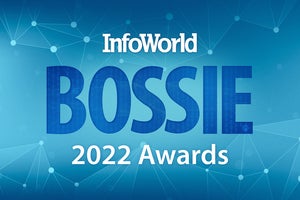InfoWorld’s 2022 Technology of the Year Award winners
InfoWorld celebrates the year’s best products in software development, cloud computing, data analytics, and machine learning.
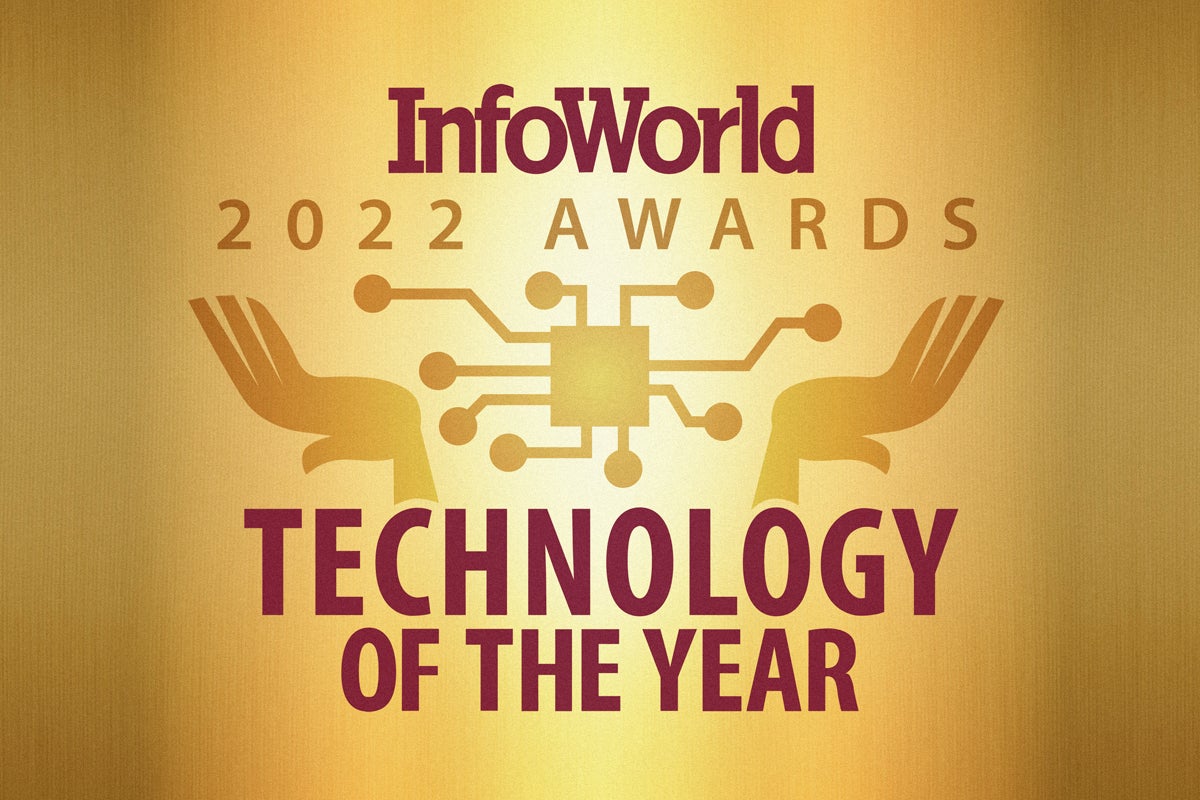
InfoWorld’s 2022 Technology of the Year Awards
What makes an enterprise modern and competitive? For starters, a modern enterprise takes advantage of a CI/CD pipeline to accelerate application builds, testing, and deployment. A modern enterprise takes advantage of the cloud, where the resources are vast and the latest innovations in software development, devops, databases, and AI can be tapped in mere minutes. And a modern enterprise is data-driven, using data from online interactions and applications to understand their customers, identify new opportunities, and move the business forward.
In short, a modern enterprise is steeped in modern, leading-edge technologies—like the 22 best-in-class development, cloud, analytics, and machine learning tools we salute in our 2022 Technology of the Year Awards. Click on to read about our winners.
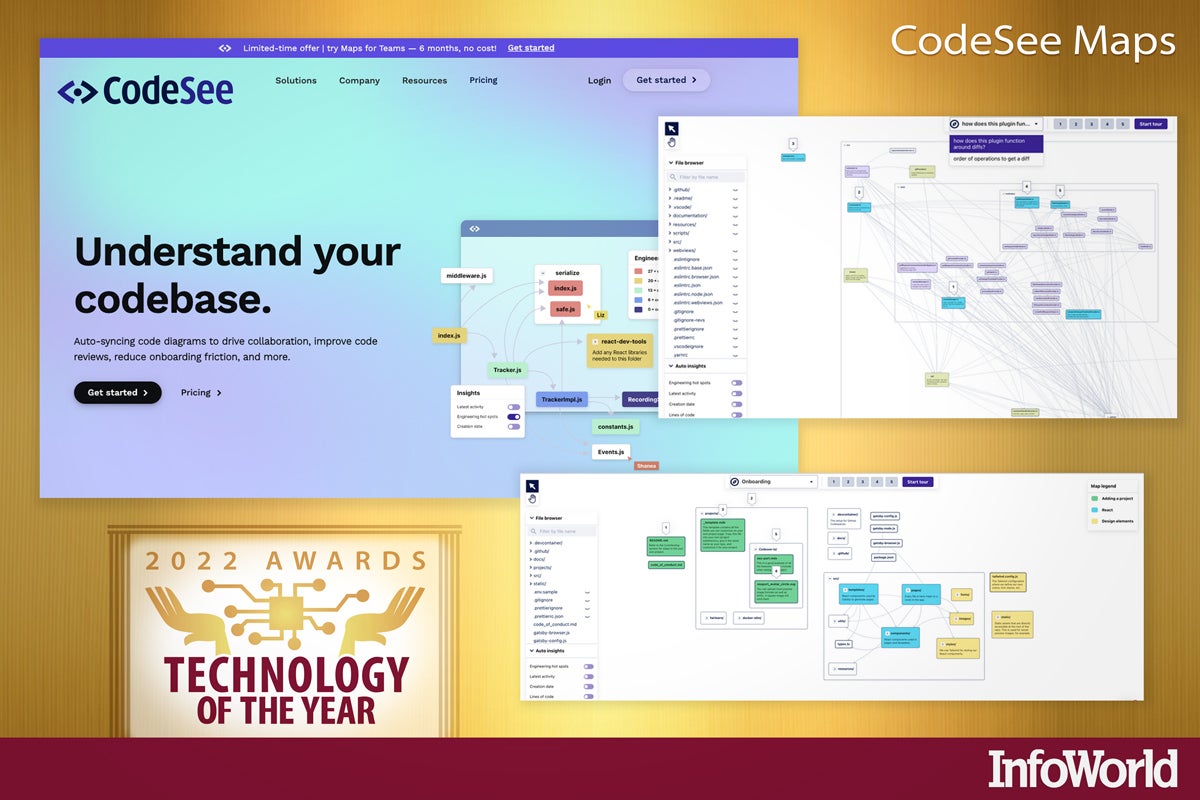
CodeSee Maps
When was the last time you took a new job and thought “this codebase is beautiful, simple, and completely easy to understand?” Was it the 5th of Never or February 30th? CodeSee Maps creates visual maps to show the components of the code and how it works. This helps with developer onboarding, code reviews, and understanding how changes affect the overall flow.
CodeSee Maps links to your GitHub repositories and automatically updates and regenerates its visualizations. As dependencies develop or change, you can see what is affected. Moreover, the tool supports different purpose-built maps including Explore and Learn, Feature Planning, Ownership, Review, Onboarding, and the much-needed Technical Debt Map. Visualizations are a great way to understand a codebase—and where it needs work.
— Andrew C. Oliver

Weave GitOps Enterprise
GitOps allows you to store configuration and policy in Git and to apply it across your Kubernetes infrastructure using agents. The advantages over devops include consistency, avoiding configuration drift, and ensuring that security, testing, and policy checks are initiated early in the CI/CD process. You may have encountered GitOps with Flux or Argo CD, two open source projects that allow you to implement GitOps.
Weave GitOps Enterprise is built on Flux 2.0 but goes beyond Flux and Argo CD with a better UI, better management of multiple clusters and applications, enterprise-grade security and auditing, and team management. It also supports integrating policy-as-code for those in DevSecOps who are looking for secure and compliant applications.
In recent weeks, a lot of people have started to think security is important. For them, Weave GitOps Enterprise might be a needed upgrade.
— Andrew C. Oliver
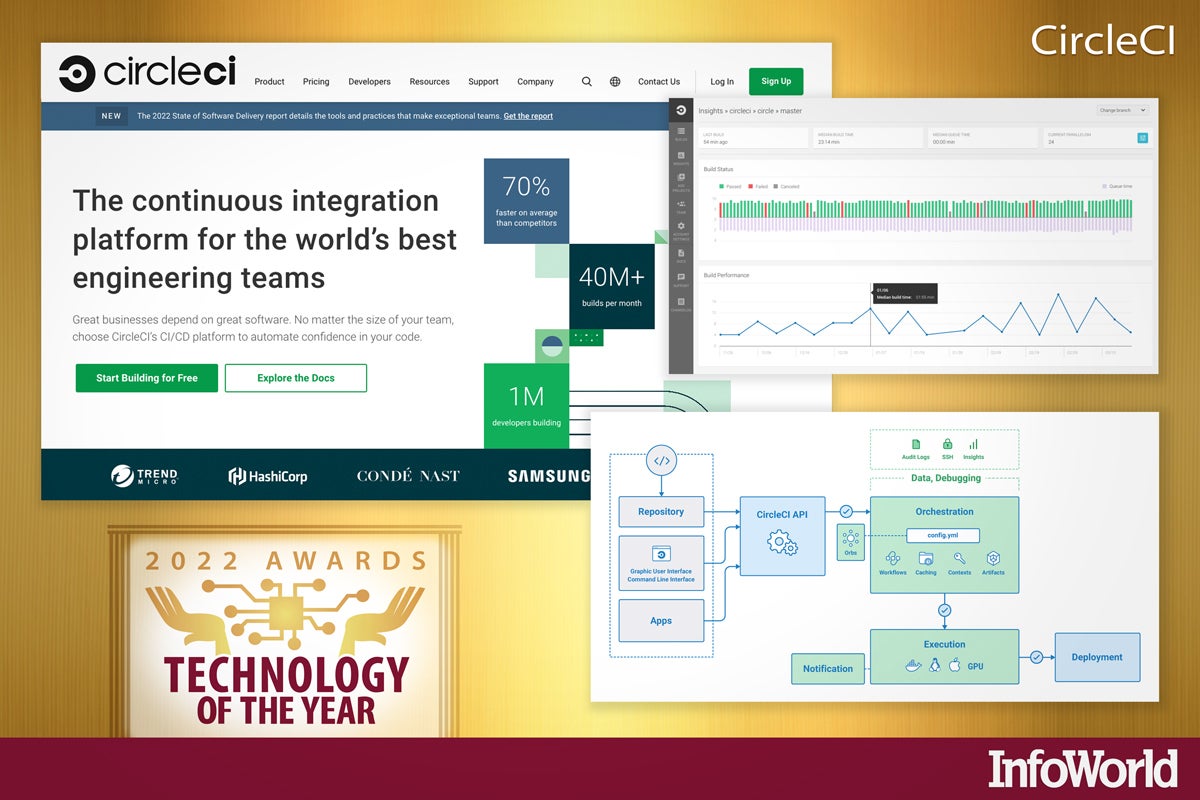
CircleCI
CircleCI continues to find new ways to accelerate the software build, test, and deployment pipeline. The cream of the CI/CD crop runs in the cloud or on premises, supports multiple build environments, and integrates with scads of languages, repos, build tools, test tools, monitoring and reporting tools, and deployment targets.
The company’s recent acquisition of Ponicode, an AI-powered test tool, further bolsters the platform with automated tools to identify potential code quality issues. Rather than relying on developers to determine test strategies, the IDE plugin automates the process, providing machine learning to guide the selection of tests to be run at various stages of development.
Software development teams looking to make software delivery fast and reliable need look no further than CircleCI.
— James R. Borck
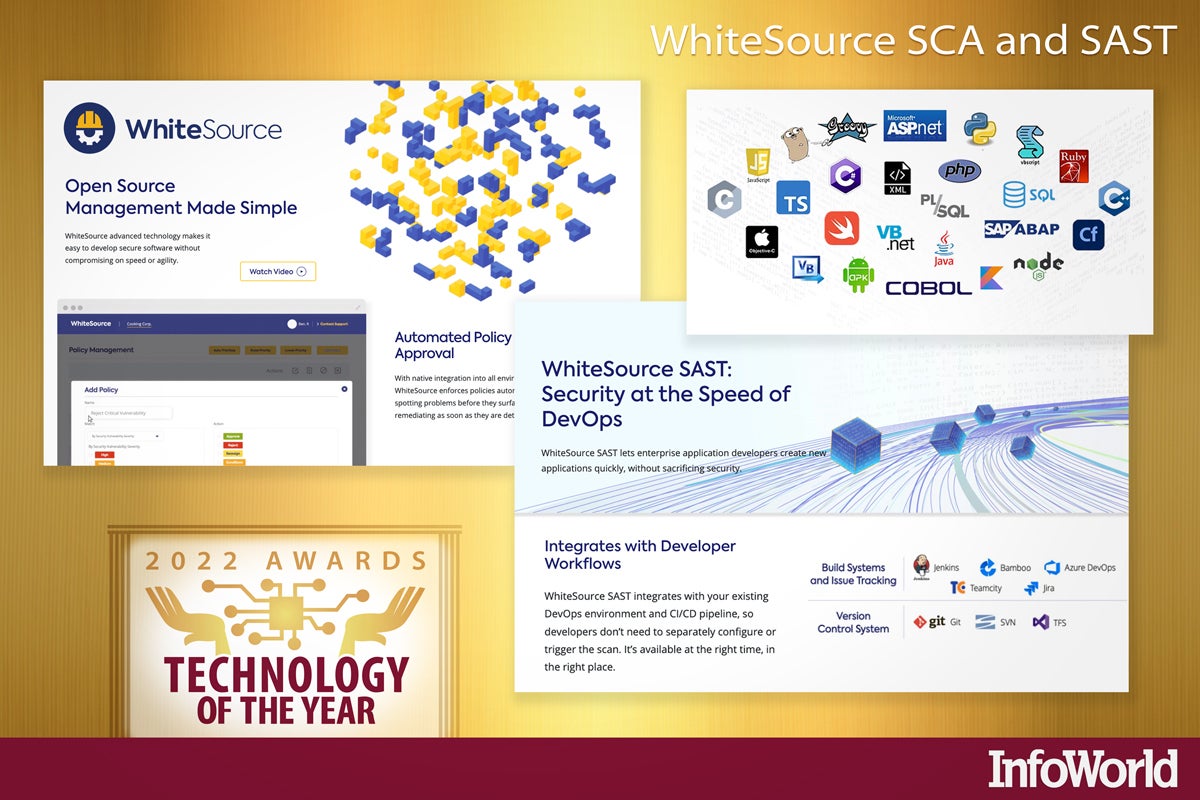
WhiteSource SCA and SAST
Software composition analysis (SCA) has joined software application security testing (SAST) as an indispensable tool for assessing vulnerability risks in modern applications. As we’ve come to rely on open source components to develop, configure, and assemble our applications, it has become immensely challenging to understand where security holes may be lurking—and how dangerous they might be.
WhiteSource SCA scans all of the code in your software projects to quickly identify open source components and their known vulnerabilities, while WhiteSource SAST identifies the security vulnerabilities in the custom code your developers produce. Supporting every programming language, framework, build system, and version control system you’re likely to use, WhiteSource SCA and SAST integrate into existing CI/CD pipelines to trap potential vulnerabilities before they manifest into full-blown security problems.
Fast, transparent, and comprehensive, WhiteSource gives developers the confidence to build faster without sacrificing peace of mind.
— James R. Borck
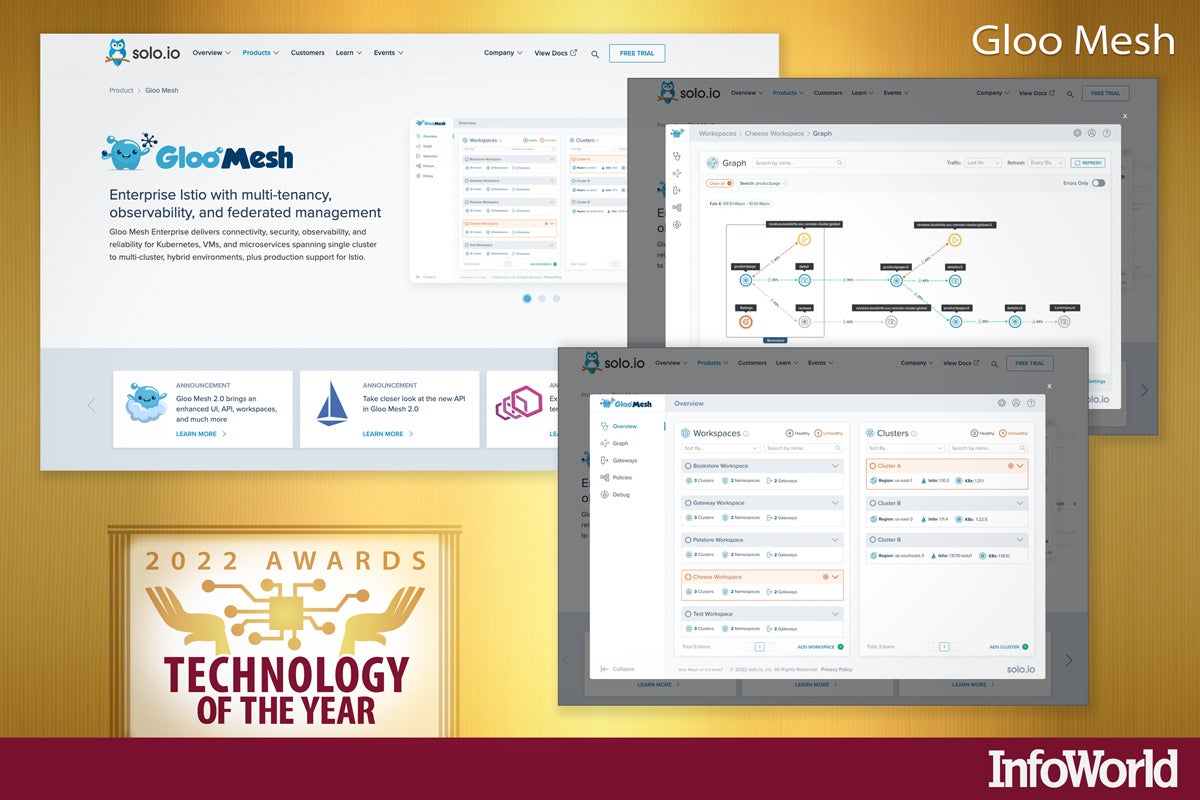
Gloo Mesh
Managing microservices is hard. For many, the answer is a service mesh like Istio. Istio helps you observe services, manage traffic between services, and apply policy to services including security. However, Istio itself needs management, especially its quarterly updates. Moreover, for managing traffic in some larger and more complicated service environments, Istio just isn’t enough.
Solo.io’s Gloo Mesh is built on Istio but extends its capabilities with security features, security policy, zero-trust networking, observability, and multi-tenancy capabilities. Gloo Mesh also catalogs APIs and adds user and group support. Overall it cleans up the messy networking chatter that is Istio and Kubernetes with a centralized management plane.
— Andrew C. Oliver
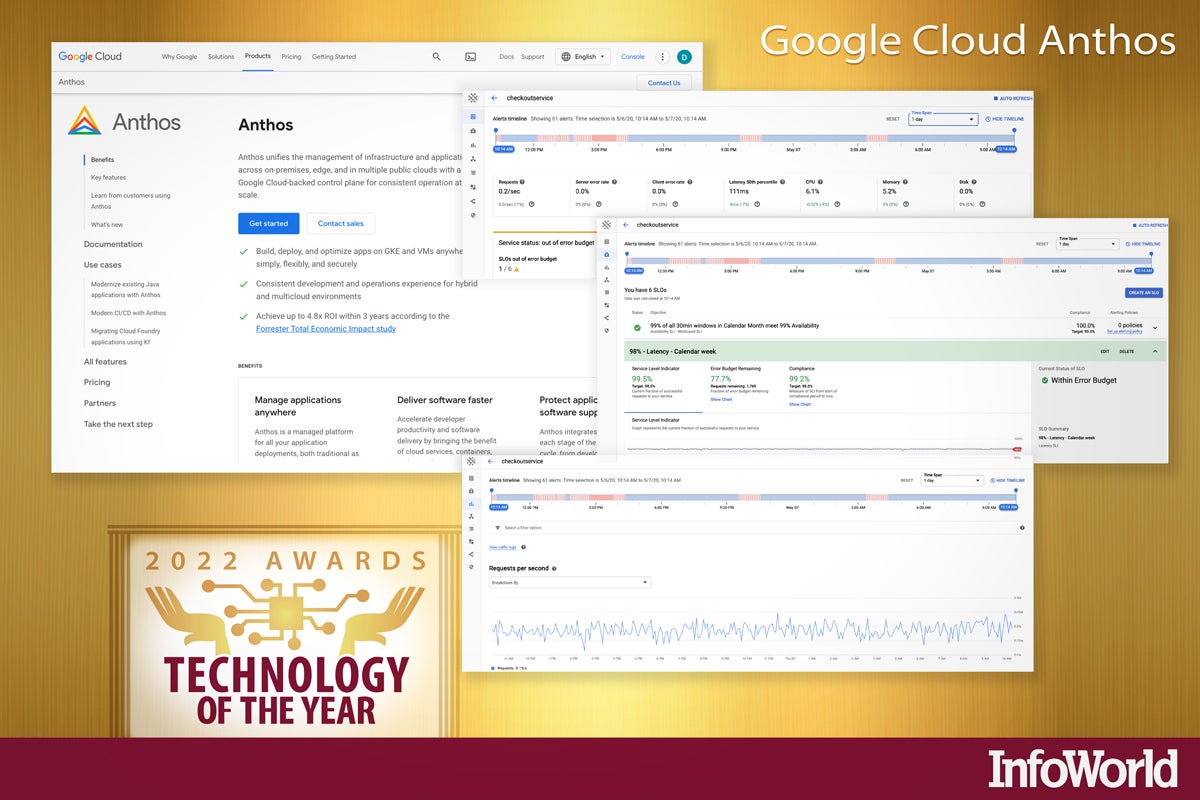
Google Cloud Anthos
In theory, Kubernetes gives you a platform to create and run complex multi-component business applications at scale, on both local hardware and remote cloud environments. In practice, deploying to multiple clouds means figuring out the quirks and vicissitudes of multiple cloud vendors, all of whom do things differently.
Google Cloud Anthos provides a single interface for managing Kubernetes workloads across Google Cloud, Amazon Web Services, and Microsoft Azure, as well as on-prem environments like VMware vSphere or bare metal. Google Cloud Anthos unifies the way many of the complex and dissonant pieces of different clouds work, such as security policies or handling application telemetry and logging.
With Migrate for Anthos, workloads on physical servers and VMs can be converted into containers and moved into a Kubernetes instance.
— Serdar Yegulalp
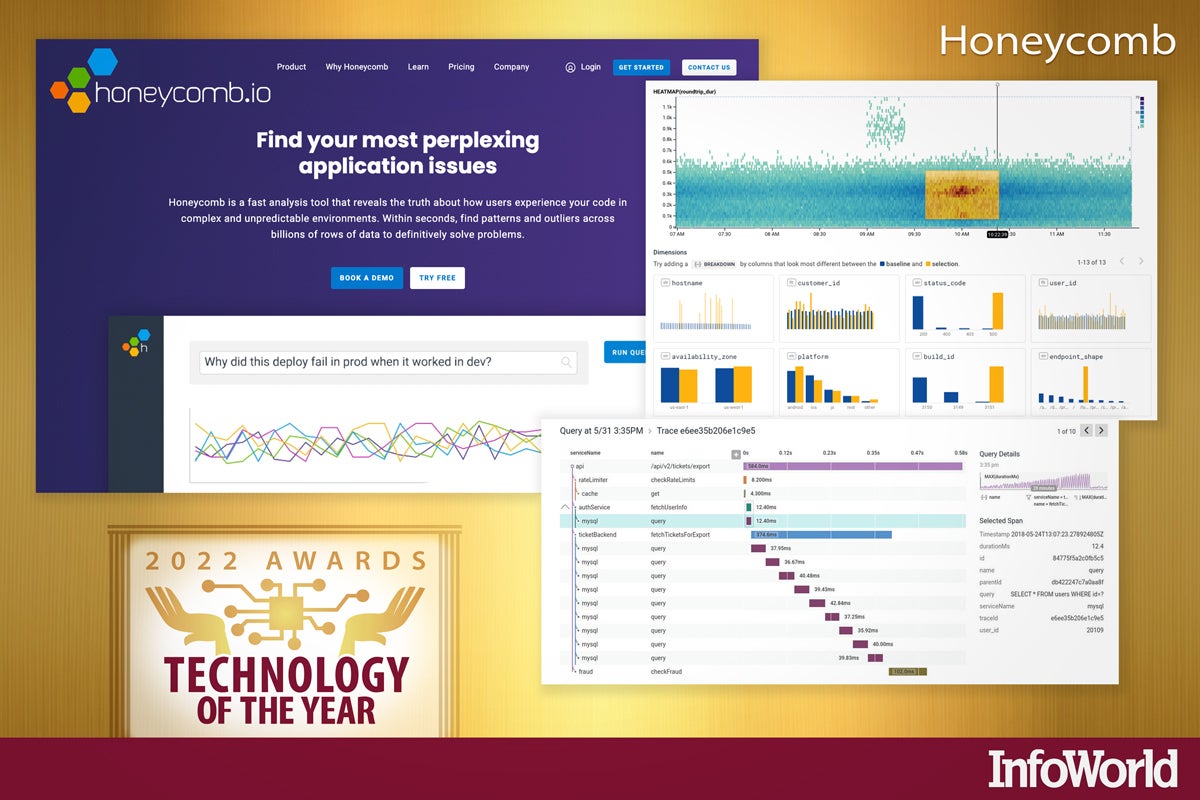
Honeycomb
Whether companies build their observability platform or buy one, more often than not they run into the problem of too much input — too many features to store and query on. Traditional observability offerings often have difficulty with high-cardinality telemetry, especially when it comes to querying. That’s a big problem when you're trying to debug a failure at 3 a.m.
Enter Honeycomb, an observability platform that makes handling high-cardinality structured logs a breeze. With the regular arrival of new features such as Honeycomb Metrics, and enthusiastic adoption by marquee tech companies like Slack and Heroku, Honeycomb remains at the top of the observability ladder in 2022.
— Ian Pointer

BigPanda
IT organizations have more applications, microservices, and databases running on multicloud architectures, and business leaders require high system reliability, fast app performance, and frequent deployments. It’s common for IT operations, SREs, and devops engineers to use six or more monitoring tools, and they are under pressure to reduce the mean time to recover from incidents. That’s a primary problem that AIOps aims to address, and BigPanda has been pioneering the way by helping IT aggregate monitoring and observability data, correlate alerts through machine learning, and use single-pane tools to identify root causes.
— Isaac Sacolick
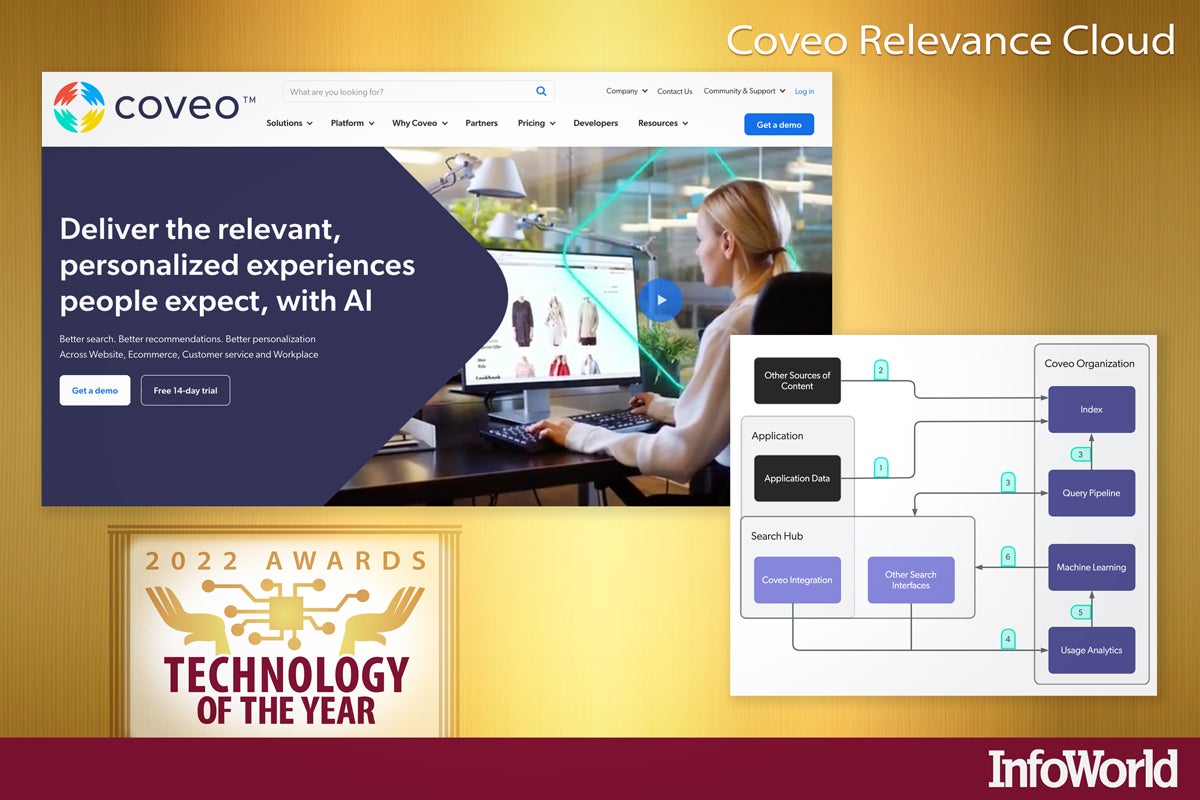
Coveo Relevance Cloud
Coveo Relevance Cloud is the full-featured search as a service that you need to connect all of your stuff to a search box. Coveo offers AI-powered relevance, recommendations, and personalization, natural language query capabilities, and (most important with any search product) connectors to all of the things you’re using, or at least a way to integrate them simply.
Coveo’s product has developed a lot in the last year. There is now a solution to personalization from a “cold start” (or anonymous shoppers), a headless search API for customizing the user experience, and a Slack connector, rounding out Coveo’s support for most common SaaS platforms. It even has low-code and no-code tools and a JavaScript framework with rich UI components. If you just want to get search done, no muss no fuss, start by looking up Coveo.
— Andrew C. Oliver
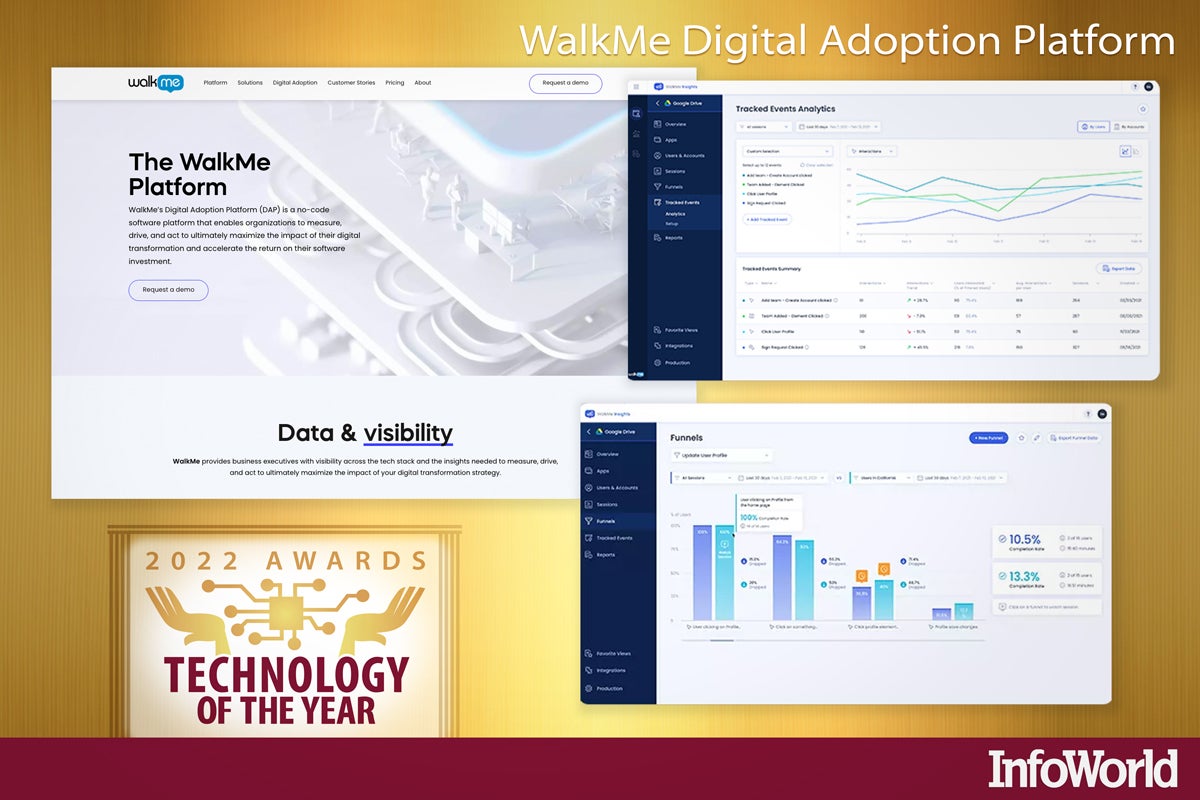
WalkMe Digital Adoption Platform
The WalkMe Digital Adoption Platform is a no-code way to inspect how users are using your software and understand how they use it. WalkMe also can guide users with targeted messaging and walkthroughs. The platform even provides AI tools to automatically find errors in the application flow.
Like many things in technology, integrations are everything. WalkMe integrates with a ton of different tools that may be part of your overall application flow. These include apps and services like Salesforce and ZenDesk and tools like Google Analytics and Slack. If you’re trying to figure out why users aren’t successful with your software, or how you could improve their experience, consider WalkMe.
— Andrew C. Oliver
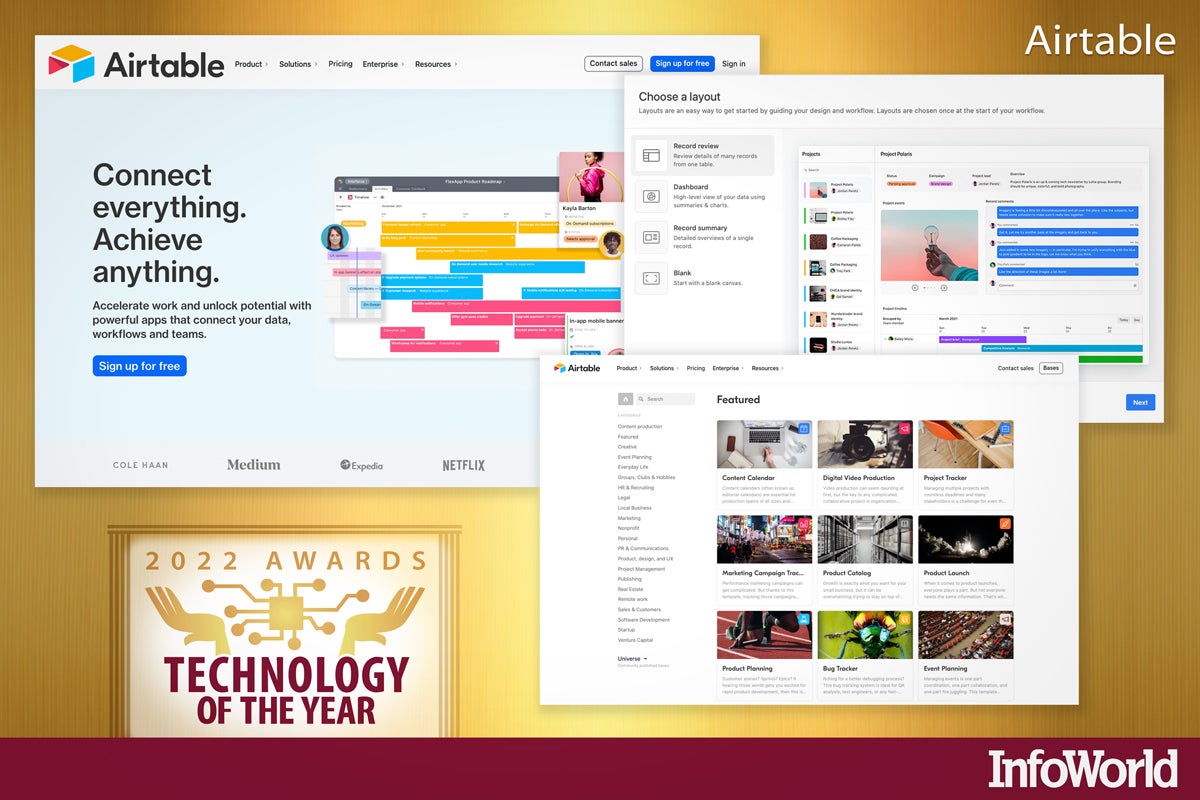
Airtable
Airtable may look like a spreadsheet in the cloud, but it’s more like a relational database in the cloud with its own low-code/no-code development environment. That’s an oversimplification. Airtable offers several development environments at a variety of skill levels ranging from non-programmers to power users to JavaScript programmers.
Airtable has three features that give it more power than a no-code app builder. Formulas are a low-code feature, and may involve functions, numeric operations, logical operations, and text operations that operate on fields. Scripts are real JavaScript programs, although they tend to be short and focused on working with your Airtable database. And automations allow you to configure custom workflows directly within Airtable, allowing you and your team to save time by automating repetitive tasks.
— Martin Heller

Google Cloud AppSheet
Google Cloud AppSheet is a no-code, intent-driven app development platform. Its web-based design environment generates apps for web, iOS, and Android. Even though it is billed as no-code, AppSheet supports spreadsheet formulas, filter expressions, and bots defined with expressions and diagrams, giving it much of the functionality of low-code app builders.
Google Cloud AppSheet has a lot more functionality than appears at first glance. AppSheet can take advantage of many of the sensors built into smartphones and tablets. It can automate processes using bots, which activate on a data change or on a schedule. It can integrate with many applications and platforms, directly or through third-party Zapier. And it can train and apply predictive machine learning models and OCR models.
— Martin Heller

Cloudflare Workers
Over the years, many developers found that they could speed up their sites by storing static bits on Cloudflare’s content delivery network, spread out across hundreds of locations close to users throughout the world. Everything is faster using data stored on the edge of the internet. Lately, Cloudflare has been opening the doors to this vast network so anyone can do much more than store some static HTML in Cloudflare’s boxes. Now you can run your own code on the edges of the internet, as near as possible to the customers.
The Cloudflare Workers are blocks of JavaScript, Rust, C, or C++ that can execute in all of these nodes whenever they’re called up by a local user. Scaling happens naturally. If your code needs to store information, Cloudflare is also beta testing its R2 object storage, which sports an Amazon S3 API so your data can live near the customers who use it. In all, Cloudflare is one of the most cost-competitive approaches for bringing simple computational resources to everyone.
— Peter Wayner
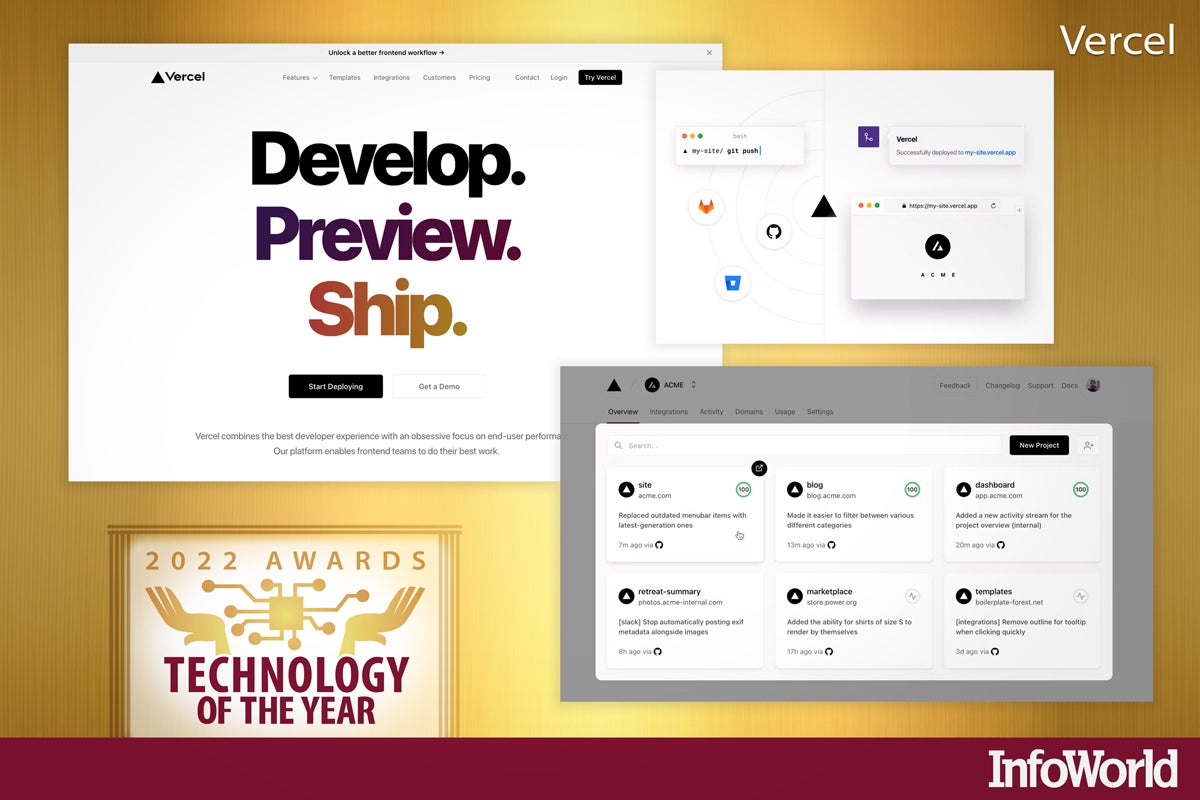
Vercel
The promise of no-configuration, button-click cloud infrastructure inches ever closer, and at the forefront is Vercel. Vercel delivers edge and serverless functions out of the box with a number of popular front-end frameworks including React/Next.js, Vue/Nuxt, and Svelte/SvelteKit, and offers impressive deploy-from-repo capabilities combined with auto-scaling and analytics.
On the happy path, Vercel can take your raw project source and turn it into a global-scale deployment in five minutes. In addition, numerous integrations with third-party software (like Shopify) are available, as well as continuous integration solutions to help ease the burden of devops. Finally, Vercel also sports impeccable open source credentials as the force behind Next.js, the leading full-stack JavaScript framework.
— Matthew Tyson

Builder
The funny thing about genius ideas is they can be hard to explain clearly at first, because they are so different from what went before. Builder is one of those. It is a system that allows for the visual construction of front-end UIs, but it’s not a WYSIWYG editor like you might expect. Instead, Builder allows for the arrangement and editing of your own custom components in virtually any front-end framework, like React or Svelte, without losing the ability to modify those components directly in the source.
All of this is achieved via a slick web interface that also supports integration with numerous data stores. The net result is a new way for designers and developers to interact, and a dramatic improvement in the development lifecycle. Throw in Builder’s backing of compelling new open source technologies like Qwik and Partytown, and you’ve got a next-generation web development platform with staying power.
— Matthew Tyson
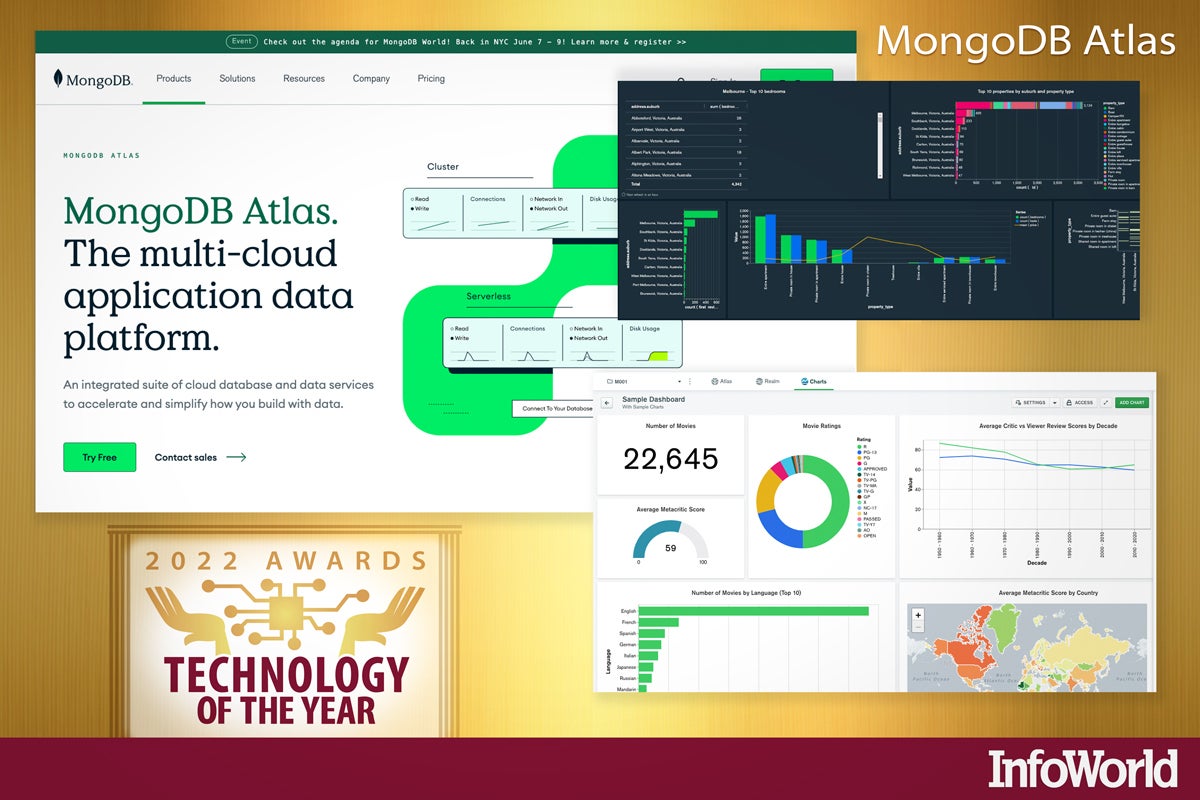
MongoDB Atlas
The two most significant trends in data stores in recent years are NoSQL and database as a service (DBaaS). Among the many offerings in these spaces, MongoDB Atlas stands out as delivering excellence on both fronts. MongoDB Atlas unites a well-thought-out web console, sensible pricing tiers, and scalable infrastructure with the power of the MongoDB engine. In addition, it offers the full range of logging, backup, and other enterprise necessities to round out the package. With a free tier to start, scale on demand, and integrations for every stack, MongoDB Atlas is a leader of DBaaS. Moreover, MongoDB remains an open source gem, receiving consistent updates to its performance and capabilities.
— Matthew Tyson
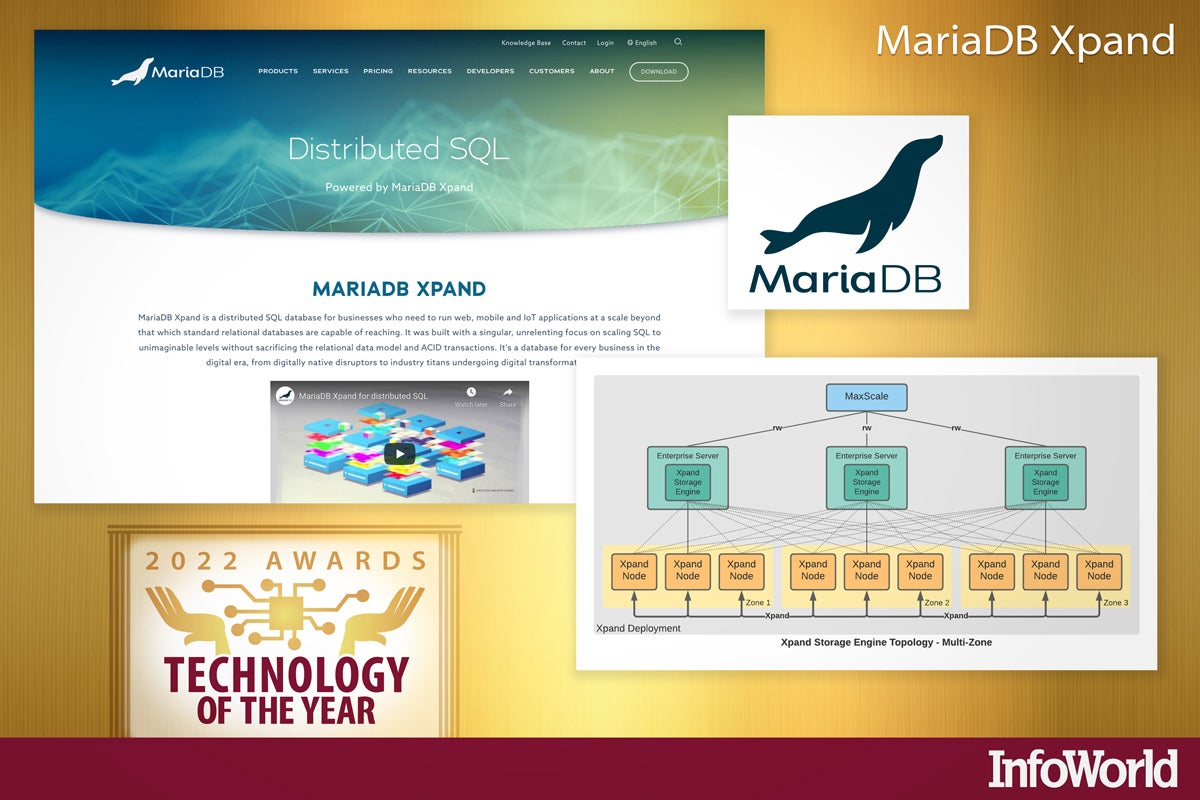
MariaDB Xpand
MariaDB Xpand is a distributed SQL database that merges the benefits of traditional relational databases (functionality and transactional integrity) with the easy scalability that more commonly comes from NoSQL databases. A competitor to systems such as Google Cloud Spanner and CockroachDB, MariaDB Xpand has the amazing advantage of being compatible with MariaDB and MySQL database connectors out of the box, meaning that you can take advantage of a system that can scale out to running 10 million queries a second as a Rails back end if you wanted. MariaDB Xpand looks destined to be one of the front-runners in the 21st century database wars.
— Ian Pointer
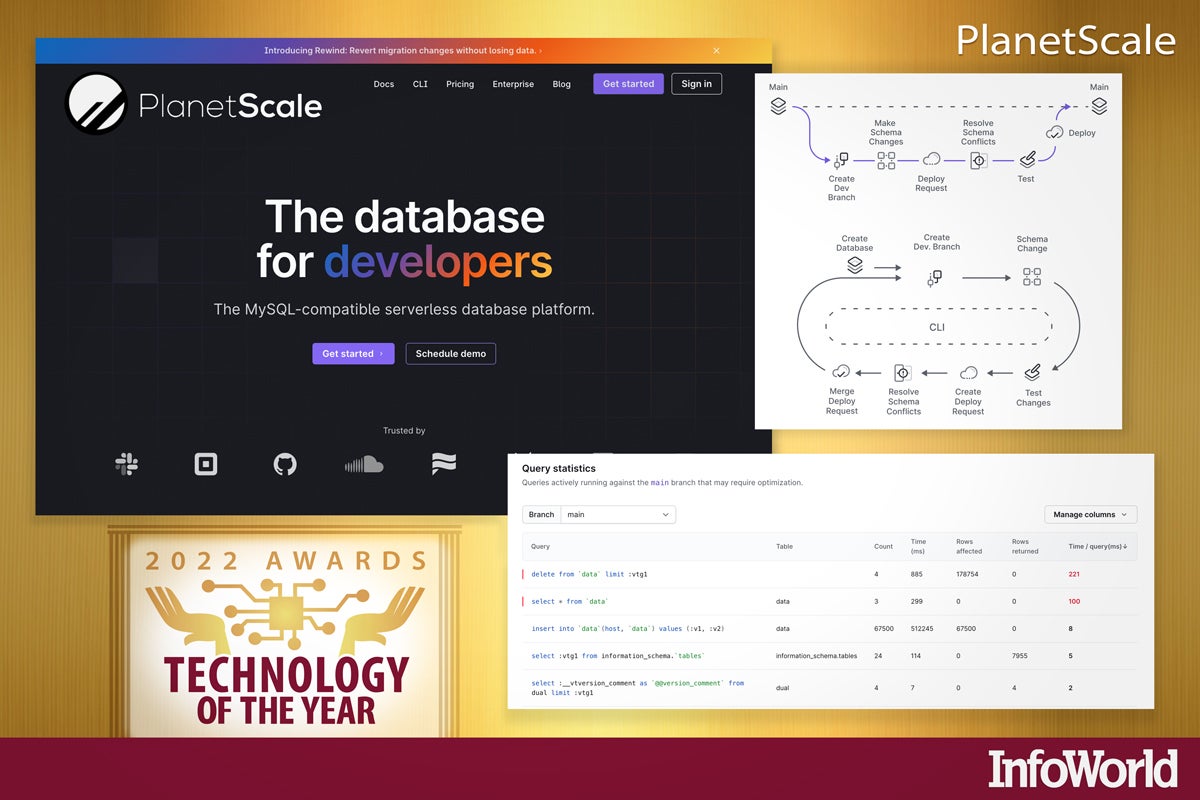
PlanetScale
PlanetScale is a MySQL-compatible, serverless database platform powered by Vitess, which is a database clustering system for horizontal scaling of MySQL using shards. Vitess also creates much lighter-weight connections than MySQL, allowing it to support thousands of connections, and it has configurable rules to rewrite queries that would hurt database performance.
As a rule, schema changes can be a pain in the neck to deploy in production relational databases. PlanetScale improves this situation by adding a branching feature. When you add a branch, you are making a copy of the database schema (without data) to a new empty database. You can then modify the schema in the branch, and finally add the branch to the deploy queue to modify the main production database. Any schema conflicts are caught when you attempt to deploy.
— Martin Heller
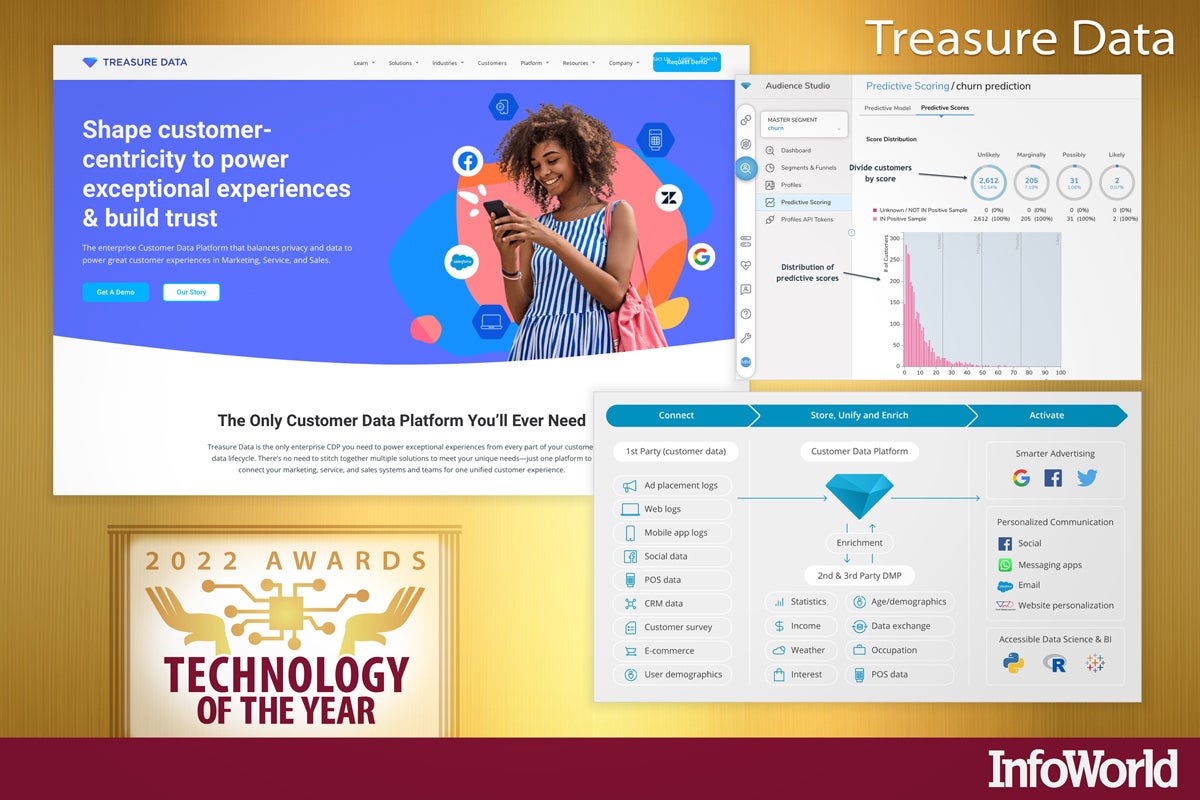
Treasure Data
Organizations collect and store customer information in all kinds of systems including CRMs, ERPs, ecommerce, content management, and marketing platforms. Given the number and disparity of these systems, and the complexities in the data, creating a single, shareable view of the customer journey can pose a monumental challenge.
The Treasure Data customer data platform ingests one million data rows per second, enriches customer profiles with third-party data, segments using several built-in machine learning algorithms, and supports marketing campaign execution on several platforms. Treasure Data is a strong supporter of open source technologies, and the platform’s open architecture allows teams to extend its capabilities with third-party Treasure Boxes.
— Isaac Sacolick
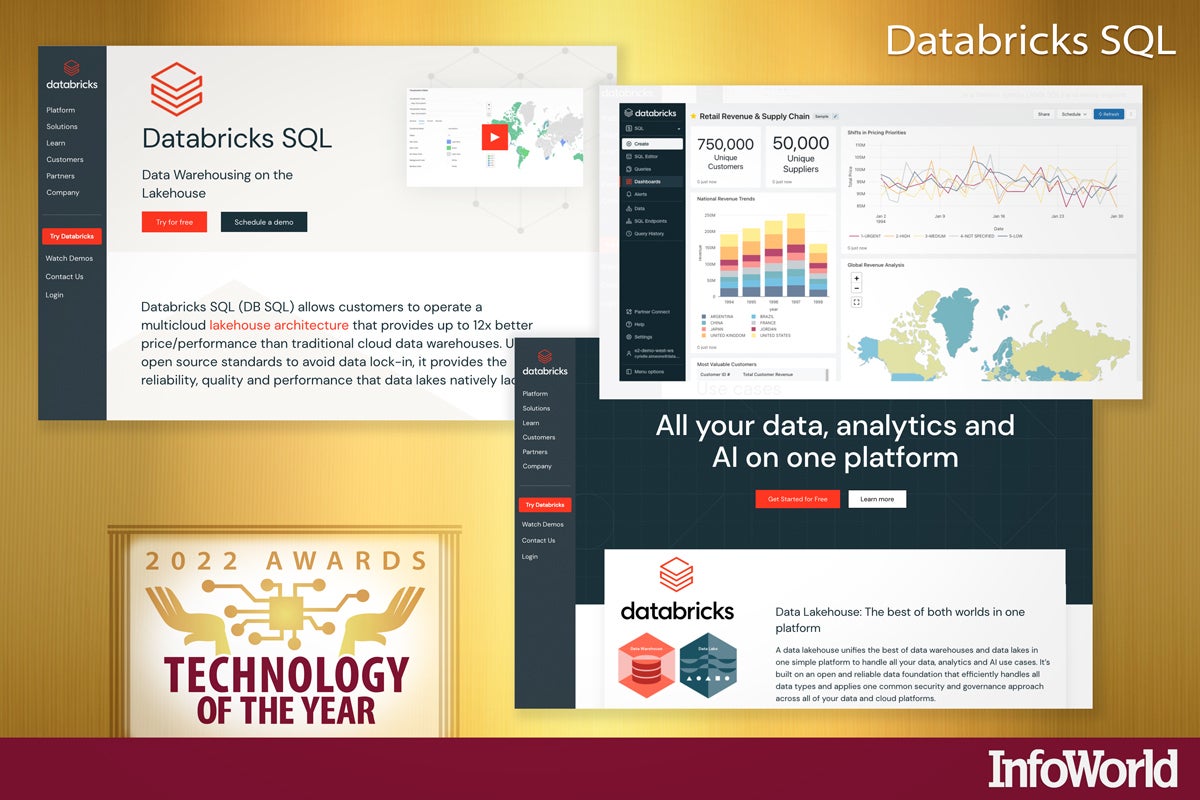
Databricks SQL
Databricks has worked steadily to enhance both its proprietary platform and the open source Apache Spark framework, becoming a heavyweight in the analytics space in the process. With the release of Databricks SQL, the company combines the elastic scaling of Apache Spark, the flexibility of the Delta Lake storage layer, and the speed of its next generation Photon SQL execution engine, which runs 2x to 4x faster than the engine you’ll find in a stock Apache Spark installation. All of this adds up to an analytics engine that supports the massive scale of a data lake and the transactional consistency of a data warehouse — and makes the Databricks commercial offering one of the best analytics platforms available.
— Ian Pointer

Hugging Face Infinity
Hugging Face of Transformers and NLP fame has started to become the place to go for deep learning models, whether they’re PyTorch, TensorFlow, or even JAX. In the past year, the company has provided a new home for Gradio, a tool for creating easy web integrations of models, and released Hugging Face Infinity, a containerized solution for enterprise-scale Transformers inference. Wringing the most performance out of today’s large deep learning architectures can be difficult, and most companies lack the MLOps experience of Meta or Google. With Infinity, companies can get sub-5ms inference times out of popular models like BERT simply by dropping in a new Docker container, opening up new avenues for the enterprise.
— Ian Pointer
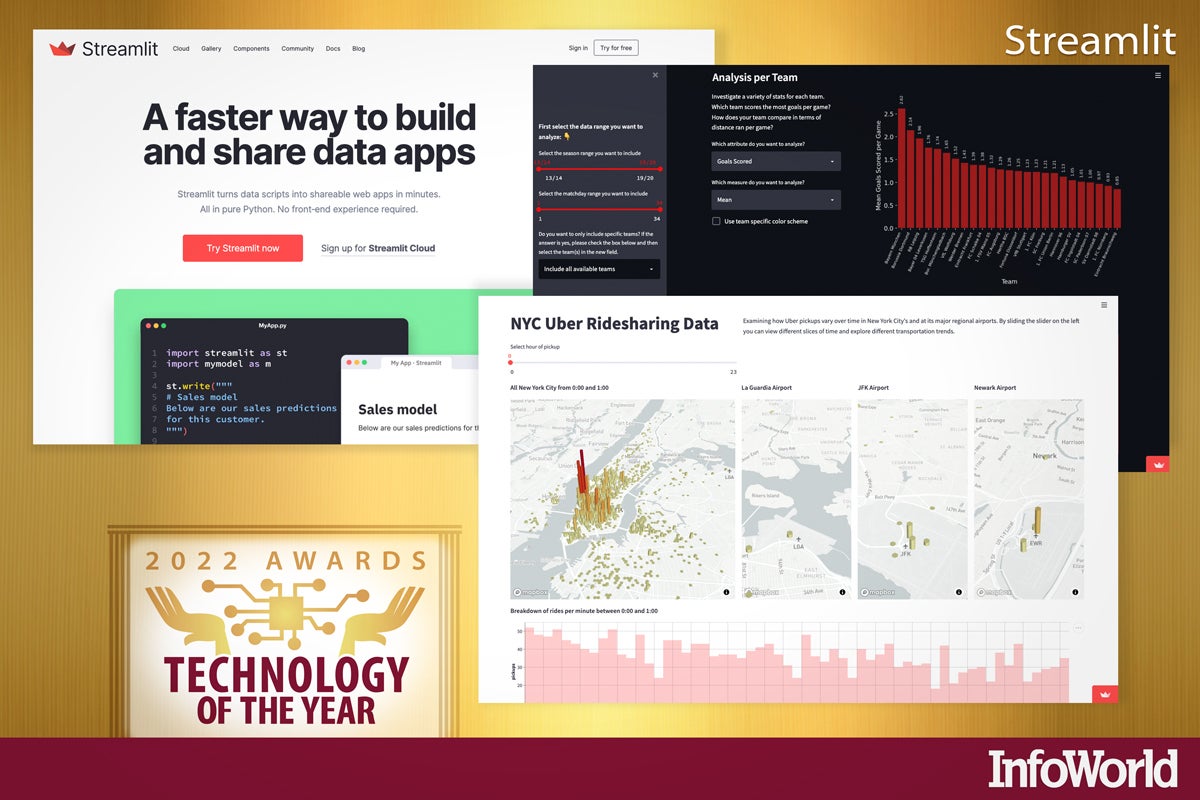
Streamlit
Snowflake obviously thinks very highly of Streamlit, as it has agreed to purchase the company for $800 million. Why pay so much for a company that built a Python library? Well, Streamlit is a library that bridges the gaps between all of those awkward but magical scripts that data scientists are fond of creating, transforming them into tools that can be used by the rest of the company. No need for another team to do all of the engineering work required to spin them out into a web application. Despite being less than three years old, Streamlit has already joined Python projects such as Jupyter as one of the essential tools in data science. Snowflake might have got itself a bargain.
— Ian Pointer
Copyright © 2022 IDG Communications, Inc.
























